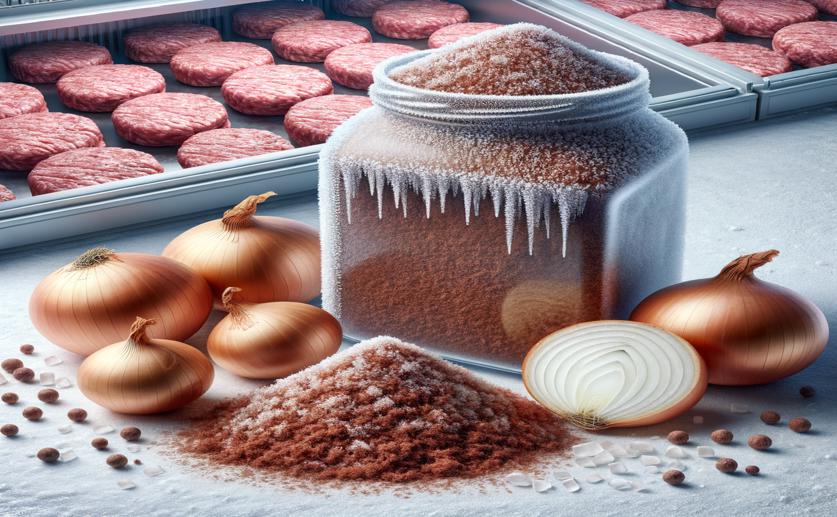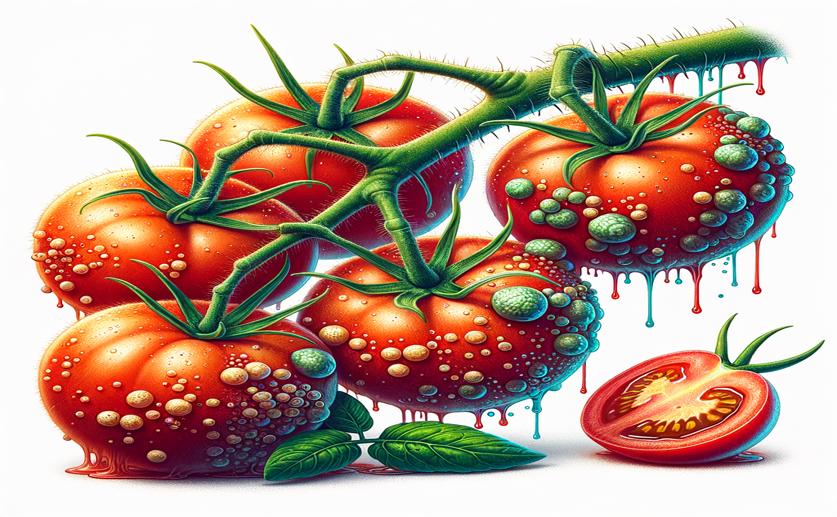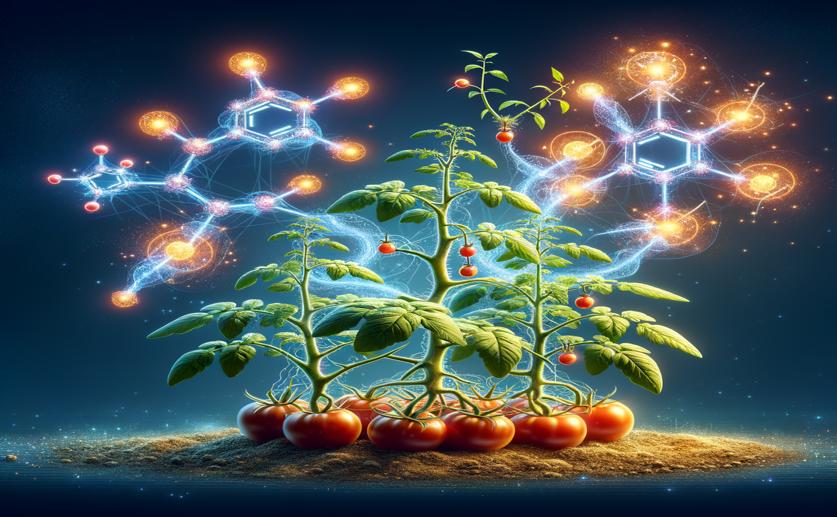
Vegetables News
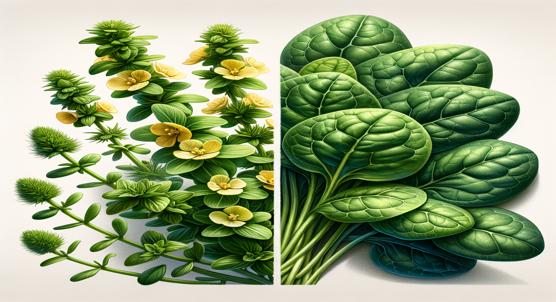
 19th August, 2024
| Greg Howard
19th August, 2024
| Greg Howard
Comparing Oxalic Acid Levels in Different Parts of Purslane and Spinach
A study by Fluminense Federal University compared methods to measure oxalic acid in purslane and spinach, finding that Flame Atomic Absorption Spectrometry (FAAS) was more reliable than UV-vis spectrophotometry due to less interference from other plant compounds.
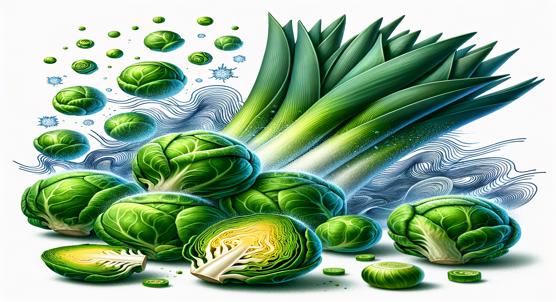
 16th August, 2024
| Jim Crocker
16th August, 2024
| Jim Crocker
How Pretreatment and Freezing Affect the Aroma of Brussels Sprouts and Leeks
A KU Leuven study reveals that pretreatment methods, like blanching, significantly impact the flavor and aroma of Brussels sprouts and leek more than frozen storage. These findings can help optimize processing and storage to maintain desired vegetable qualities.
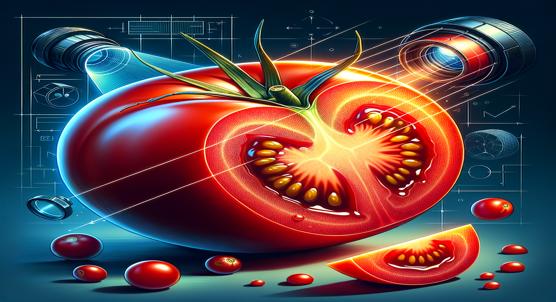
 15th August, 2024
| Jim Crocker
15th August, 2024
| Jim Crocker
Measuring Sugar Levels in Tomatoes Using Advanced Imaging Technology
A study from Ningxia University shows that hyperspectral imaging combined with neural networks can non-destructively predict tomato sweetness under different nitrogen treatments, aiding farmers in optimizing flavor and quality.
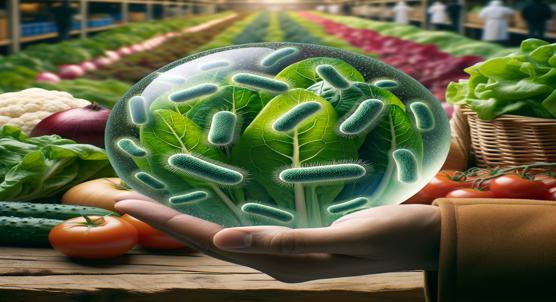
 13th August, 2024
| Jim Crocker
13th August, 2024
| Jim Crocker
Antibiotic-resistant Bacteria Found on Leafy Vegetables in Eastern Region
Researchers found antibiotic-resistant bacteria in leafy vegetables from Dammam's market, highlighting public health risks. Key bacteria showed resistance to multiple antibiotics, underscoring the need for better detection and control measures in agriculture.
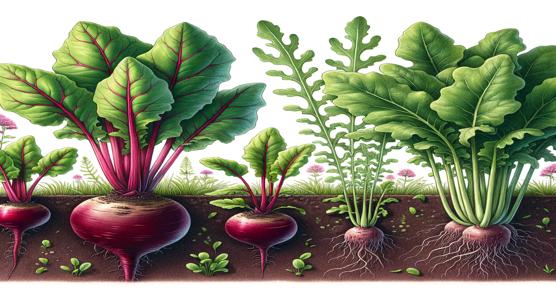
 10th August, 2024
| Jim Crocker
10th August, 2024
| Jim Crocker
Weight Loss Benefits of Beet and Arugula Extracts
Research from the Academy of Athens reveals that beetroot and arugula extracts can reduce weight gain and fat accumulation in mice. While not improving glucose tolerance or blood pressure, these extracts show promise as dietary supplements for weight management.

 7th August, 2024
| Jenn Hoskins
7th August, 2024
| Jenn Hoskins
Using Plant Hormones to Boost Okra Yield and Quality
Researchers in Bangladesh found that using specific doses of GA3 and NAA plant growth regulators can boost okra yield by up to 35% and improve its nutritional quality. This discovery offers a practical solution to enhance food security and agricultural productivity in the region.

 4th August, 2024
| Jim Crocker
4th August, 2024
| Jim Crocker
How Vegetable Roots and Leaves Absorb and Move Perfluoroalkyl Substances
Recent research reveals that radishes, lacking protective root barriers, absorb and transfer PFAS chemicals more readily than pak choi, posing higher risks of human exposure through the food chain. This underscores the need for careful crop selection in contaminated areas.

 4th August, 2024
| Jenn Hoskins
4th August, 2024
| Jenn Hoskins
Health Benefits and Nutrient Profile of Broccoli, Kale, and Cauliflower Extracts
Broccoli, cabbage, and cauliflower extracts show strong antioxidant and antimicrobial properties due to glucosinolates and phenolic compounds. These findings suggest their potential in preventing chronic diseases and as natural alternatives to synthetic antimicrobials.

 2nd August, 2024
| Jim Crocker
2nd August, 2024
| Jim Crocker
Stabilized Green Food Color from Spinach: How a Special Enzyme Process Works
A new method from Tuscia University efficiently extracts chlorophyll from spinach using a biocatalyst and zinc chloride, boosting yield by 51% and preserving color. This eco-friendly approach offers a sustainable solution for producing natural green food colorants.

 29th July, 2024
| Jenn Hoskins
29th July, 2024
| Jenn Hoskins
How Natural Compounds Boost Broccoli Seedling Growth by Enhancing Metabolism
A study by CEBAS-CSIC reveals that natural plant compounds, glucosinolates and phenols, can enhance broccoli growth and stress tolerance. This research suggests new eco-friendly agricultural practices to boost crop productivity and resilience.

 24th July, 2024
| Jim Crocker
24th July, 2024
| Jim Crocker
Seasonal Vegetables Image Dataset
Researchers from Uttara University have introduced the 'SeasVeg' dataset, featuring 4500 images of ten seasonal vegetables from Bangladesh. Using machine learning models like ResNet50, they achieved up to 99% accuracy in classification, aiding both healthcare and education.

 24th July, 2024
| Jim Crocker
24th July, 2024
| Jim Crocker
Melatonin Extends Okra Freshness by Slowing Softening and Reducing Weight Loss
Researchers found that melatonin can extend the shelf life of okra by maintaining firmness and reducing weight loss. It works by modulating genes related to cell wall integrity and promoting stomatal closure, offering a novel solution to postharvest spoilage.
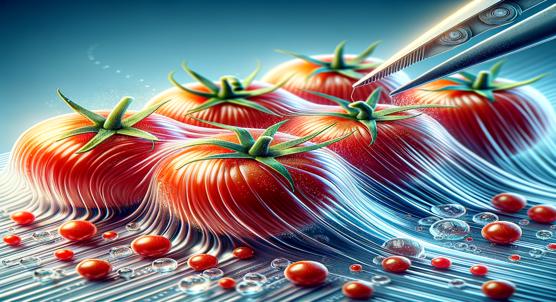
 24th July, 2024
| Jim Crocker
24th July, 2024
| Jim Crocker
New Chitosan-Onion Films Help Keep Cherry Tomatoes Fresh Longer
Researchers at Shenyang Medical College developed chitosan-onion polysaccharide films to preserve fruits and vegetables. These films enhance antimicrobial and antioxidant properties, effectively delaying spoilage in cherry tomatoes, though mechanical issues remain.
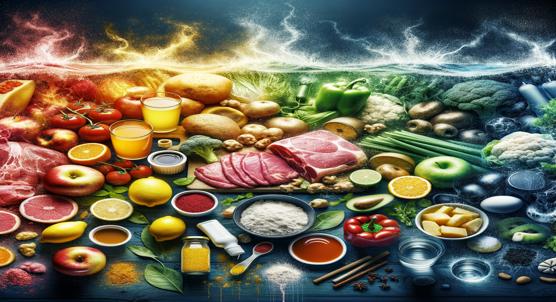
 24th July, 2024
| Jenn Hoskins
24th July, 2024
| Jenn Hoskins
Cancer Risk from Chemicals in Food, Water, and Vegetables
A study from the University of Calabar reveals that PAH levels in water, oils, vegetables, and barbecued foods are mostly within safe limits, but surface water and grilled foods may pose higher cancer risks. Continuous monitoring is essential for public health.
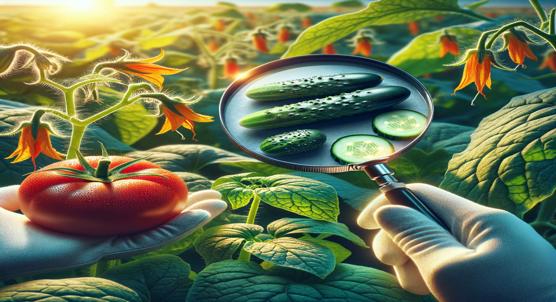
 23rd July, 2024
| Greg Howard
23rd July, 2024
| Greg Howard
Assessing Fluoxapiprolin Residues and Risks in Cucumber and Tomato Crops
Anand Agricultural University's study on fluoxapiprolin in cucumber and tomato shows rapid dissipation of residues, posing minimal consumer risk when good practices are followed. Proposed pre-harvest intervals ensure food safety and environmental protection.
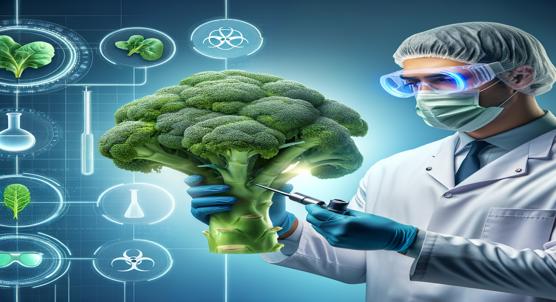
 18th July, 2024
| Greg Howard
18th July, 2024
| Greg Howard
Ensuring Safe Insecticide Levels in Broccoli Using Advanced Testing Methods
Dr. YS Parmar University's study on broccoli shows that using the QuEChERS method and LC-MS/MS, residues of three insecticides diminish quickly and pose no dietary risk. This research supports safe pesticide use and offers guidelines for regulatory authorities.

 16th July, 2024
| Jenn Hoskins
16th July, 2024
| Jenn Hoskins
Unlocking the Health Benefits of Onion Waste Through Advanced Chemical Analysis
Onion waste, often discarded, holds promising health benefits. A study reveals that onion peel and root extracts can enhance erectile function and reduce inflammation, thanks to key bioactive compounds. This could lead to new therapeutic uses and sustainable practices.

 14th July, 2024
| Jenn Hoskins
14th July, 2024
| Jenn Hoskins
Tomato Variety Effects on Quality and Soil Cleanup in Mixed Planting Systems
Intercropping hyperaccumulator Sedum alfredii with tomato varieties, especially cherry tomato Hangza 503, can reduce soil cadmium levels and produce safer vegetables, offering a sustainable solution for contaminated soils.
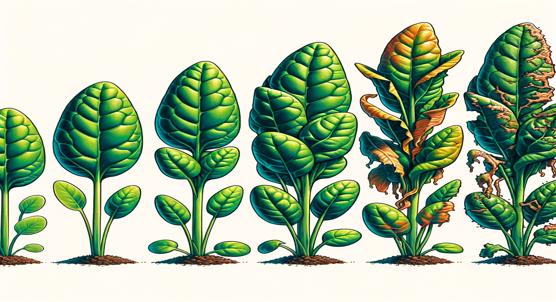
 13th July, 2024
| Jim Crocker
13th July, 2024
| Jim Crocker
How Baby Spinach Bacterial Quality Changes Over Time
Cornell research reveals that baby spinach from Salinas, CA, has higher bacterial concentrations than Yuma, AZ. Preharvest temperatures also impact bacteria levels. These findings could guide region-specific quality management to enhance consumer safety.
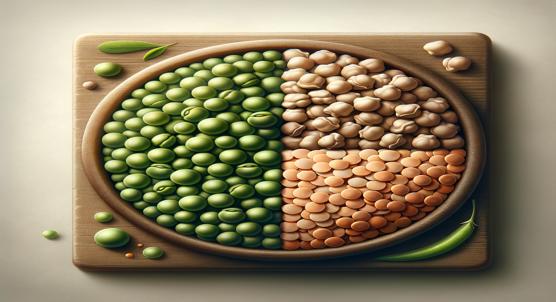
 12th July, 2024
| Jim Crocker
12th July, 2024
| Jim Crocker
Understanding Allergies to Peas, Chickpeas, Lentils, and More
A shift to vegan diets has increased allergic reactions to legumes like beans, peas, and chickpeas, beyond common allergens like peanuts. A study highlights the need for better diagnostics and awareness of cross-reactions and geographic differences in legume allergies.
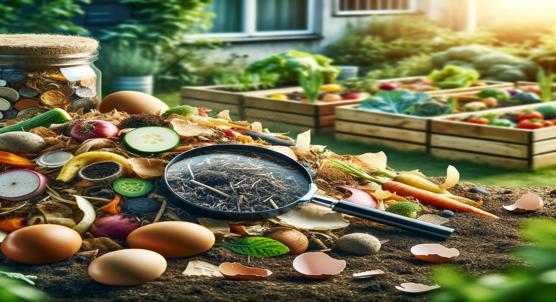
 11th July, 2024
| Jim Crocker
11th July, 2024
| Jim Crocker
Improving Urban Gardens with Compost: Analyzing Soil and Vegetable Nutrients
Urban gardening boosts sustainability and community ties but can pose health risks due to soil contamination. A Vienna study found compost reduces harmful elements in produce, and washing veggies lowers toxin levels, offering practical tips for safer urban horticulture.

 9th July, 2024
| Jenn Hoskins
9th July, 2024
| Jenn Hoskins
Health Risks from Contaminated Green Leafy Vegetables in Ambagarh Chowki
A study in India found that leafy vegetables, particularly spinach, contain high levels of harmful elements like lead and arsenic, exceeding WHO limits. This poses significant health risks, highlighting the need for stricter safety measures in agriculture.

 8th July, 2024
| Greg Howard
8th July, 2024
| Greg Howard
How Different Colored Sweet Potatoes Store Healthy Plant Compounds
A study from Hubei Minzu University reveals significant differences in the metabolite profiles of white, orange, and purple sweet potatoes. Key compounds like flavonoids and phenolic acids vary, offering insights into their nutritional benefits and potential for functional foods.

 7th July, 2024
| Greg Howard
7th July, 2024
| Greg Howard
Quality Changes in Tomato Sauce Treated with High Pressure Technology
High hydrostatic pressure (HHP) treatment at 500 MPa/50°C enhances the nutritional quality of tomato sauce, boosting phenolic and lycopene content by 6.7% and 7.5%. It also ensures microbial safety, offering a promising alternative to traditional thermal methods.
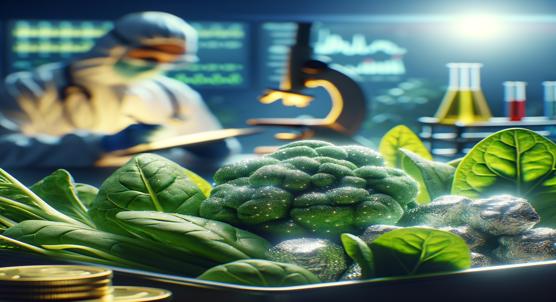
 3rd July, 2024
| Jenn Hoskins
3rd July, 2024
| Jenn Hoskins
Heavy Metal Contamination in Leafy Vegetables: Health Risks and Safety Measures
Heavy metal contamination in leafy vegetables exceeds safety limits, posing health risks. University of Poonch's study calls for strict monitoring, as marketed veggies show higher metal levels than local ones. Key culprits include cadmium, lead, and nickel.
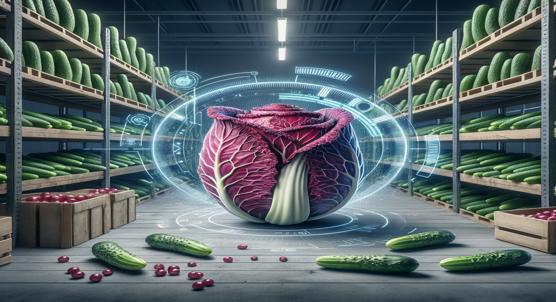
 3rd July, 2024
| Jim Crocker
3rd July, 2024
| Jim Crocker
Red Cabbage Film as an Eco-Friendly Sensor for Food Safety in Stored Cucumbers
Scientists have developed an eco-friendly biopolymer film using red cabbage extract and bacterial cellulose to detect contamination and gamma radiation in cucumbers. This smart packaging changes color with pH shifts, offering real-time food safety and quality monitoring.

 29th June, 2024
| Jenn Hoskins
29th June, 2024
| Jenn Hoskins
Understanding What Helps or Hinders Rural Adults in Eating Fruits and Vegetables
A Deakin University study in rural Australia highlights key factors affecting fruit and vegetable intake. Individual habits, social settings, and physical environments all play roles. Strategies addressing these barriers could enhance diet quality and reduce chronic diseases.
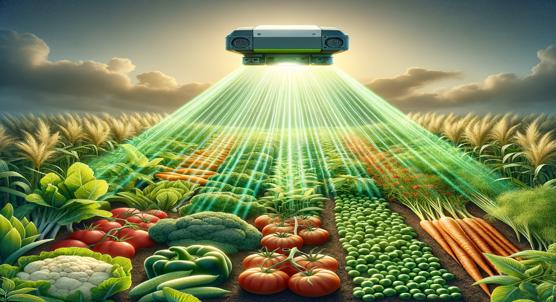
 29th June, 2024
| Jenn Hoskins
29th June, 2024
| Jenn Hoskins
Predicting Vegetable Crop Height and Size Using Advanced LiDAR Technology
Advancements in remote sensing and deep learning by the Indian Institute of Space Science and Technology enable precise prediction of crop height and crown area for vegetables, enhancing precision agriculture with around 80% accuracy.
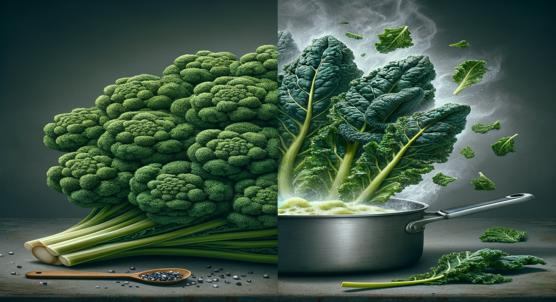
 28th June, 2024
| Greg Howard
28th June, 2024
| Greg Howard
How Cooking Affects Iodine, Nutrients, and Antioxidants in Kale
A study by the University of Agriculture in Krakow found that iodine-biofortified kale can combat iodine deficiency. Thermal treatments reduce nutrients, but red kale retains more iodine, especially with 8-hydroxy-7-iodo-5-quinolinesulfonic acid, enhancing its nutritional value.
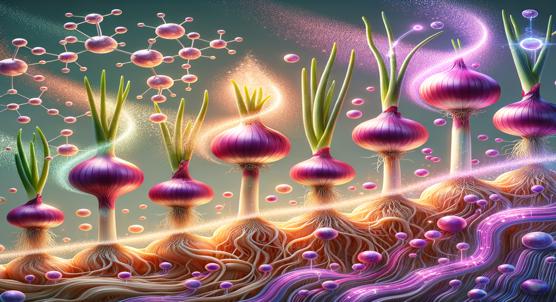
 26th June, 2024
| Greg Howard
26th June, 2024
| Greg Howard
Using Advanced Analysis to Track Amino Acid and Scent Changes in Growing Onions
Researchers at Ningxia University identified key flavor compounds in Lou onion pseudostems, recommending optimal harvesting just before flower stems emerge to maximize flavor. This evidence-based insight aids farmers in enhancing onion quality.
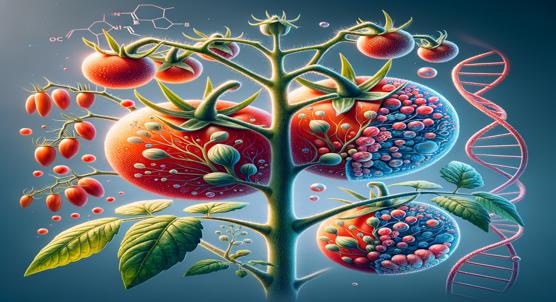
 24th June, 2024
| Jim Crocker
24th June, 2024
| Jim Crocker
How Tomato Genes BBX16 and BBX17 Affect Plant Reproduction
The University of Verona study reveals that microProteins SlBBX16 and SlBBX17 in tomatoes influence flowering and fruit development. Overexpression delays flowering and affects fruit size by altering key genes, offering insights for optimizing crop yields.

 23rd June, 2024
| Greg Howard
23rd June, 2024
| Greg Howard
Studying the Toxic Effects of Pumpkin on Gut Health
Research from Hebei Medical University shows that Cucurbita pepo cv Dayangua (CPD) is safe for long-term use, exhibiting low toxicity and beneficial effects on gut microbiota in mice. This study highlights CPD's potential as a natural product with medicinal properties.

 21st June, 2024
| Greg Howard
21st June, 2024
| Greg Howard
How Purple Radishes Get Their Color: A Study of Gene Activity
Researchers at Gannan Normal University have identified key genes regulating anthocyanin biosynthesis in radish, explaining the color variations in flowers. This study enhances our understanding of plant pigmentation and could lead to agricultural advancements.

 16th June, 2024
| Jim Crocker
16th June, 2024
| Jim Crocker
How Eggplant Plants Cope with Water Stress and Boost Antioxidants
Researchers at Universitat Politècnica de València have identified eggplant genotypes with enhanced drought tolerance. By using diverse genetic lines and wild relatives, they aim to develop resilient eggplant varieties, crucial for maintaining productivity amid climate change.
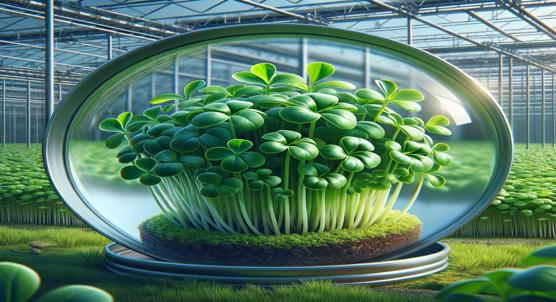
 16th June, 2024
| Greg Howard
16th June, 2024
| Greg Howard
New Watercress Variety Shows Enhanced Health Benefits in Longer Growth Trials
Boldrewood watercress, a new variety from the University of Southampton, boasts enhanced health benefits. With high antioxidants and increased glucosinolates, it promises superior cancer-preventive properties and practical advantages for consumers.
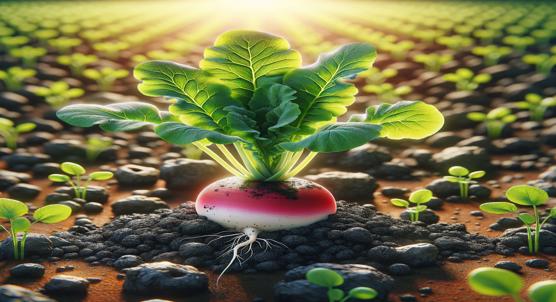
 14th June, 2024
| Jim Crocker
14th June, 2024
| Jim Crocker
Reducing Heavy Metal Toxicity in Radishes with Natural Compounds and Biochar
Researchers found that combining strigolactones and acidified biochar significantly boosts radish growth in cadmium-contaminated soil. This synergy reduces oxidative stress, enhancing plant health and offering a promising solution for safer, sustainable agriculture.
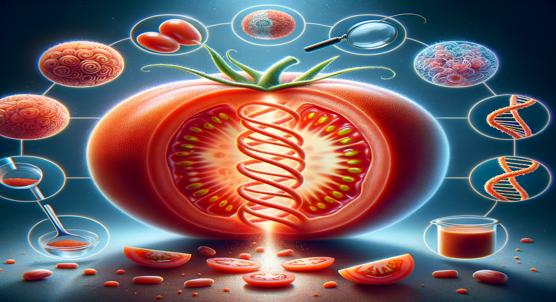
 11th June, 2024
| Jenn Hoskins
11th June, 2024
| Jenn Hoskins
Tomato Fiber Reduces Fatty Liver by Improving Gut Health and Bile Acid Balance
Tomato pectin shows promise in combating nonalcoholic fatty liver disease (NAFLD) by enhancing gut microbiota diversity and regulating bile acid metabolism, offering a potential dietary intervention to alleviate liver inflammation and metabolic disturbances.
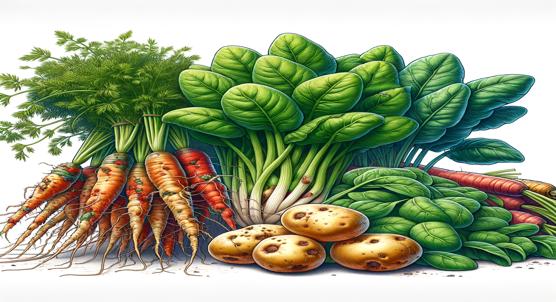
 9th June, 2024
| Greg Howard
9th June, 2024
| Greg Howard
How Pesticide Residues Impact Vegetable Growth and Yield
Researchers from C.K. Tendam University found that improper pesticide use in Navrongo, Ghana, poses health risks and affects crop yields. Their study highlights the need for better farmer education and stricter regulations to ensure food safety and protect public health.

 9th June, 2024
| Jim Crocker
9th June, 2024
| Jim Crocker
How Melon Seed Oil Cake Particle Size Affects Bread Quality
Researchers from the University of Reading found that incorporating 3% melon seed oil cake (MSOC) into bread, especially with medium or coarse particles, maintains good quality. This sustainable approach reuses by-products, reducing waste and enhancing nutrition.

 8th June, 2024
| Greg Howard
8th June, 2024
| Greg Howard
Extending Tomato Freshness with Zucchini-Based Edible Coating
Recent research from Chandigarh University shows that a 5% zucchini-derived pectin coating can extend the shelf life of tomatoes by 2 days, preserving key nutrients and delaying ripening. This bio-based, edible coating offers a promising, natural solution for food preservation.
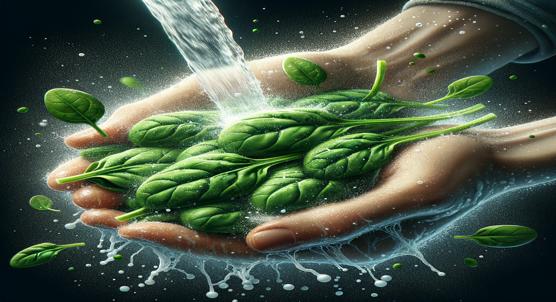
 7th June, 2024
| Greg Howard
7th June, 2024
| Greg Howard
How Boric Acid Washes Affect Fresh-Cut Spinach Safety and Quality
Researchers at Ankara University found that a 1% boric acid solution effectively disinfects fresh-cut spinach, reducing harmful bacteria while preserving its nutritional content and physical quality, offering a safer alternative to chlorine-based washes.
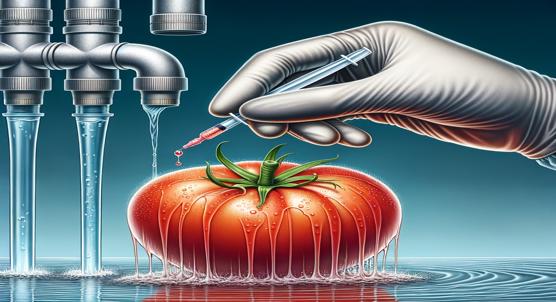
 30th May, 2024
| Jim Crocker
30th May, 2024
| Jim Crocker
Preventing Salmonella on Tomatoes Using Peroxyacetic Acid in Water Systems
The University of Florida study shows peroxyacetic acid (PAA) can prevent Salmonella cross-contamination in tomato flume tanks, especially at lower concentrations, if organic load is controlled. This offers a safer, eco-friendly option for tomato processing.

 30th May, 2024
| Jim Crocker
30th May, 2024
| Jim Crocker
Healthy Habits and Fitness Levels in Older Adults in the City
The study reveals that older adults in urban Southcentral Alaska have high fruit and vegetable intake but low physical activity levels, highlighting the need for multicomponent interventions focusing on diet, exercise, and self-efficacy to enhance their overall well-being.

 30th May, 2024
| Greg Howard
30th May, 2024
| Greg Howard
Seasonal Changes in Kimchi Cabbage: Using AI to Study Growing Seasons and Taste
Researchers at Korea University analyzed kimchi cabbage's metabolic makeup across seasons, identifying key compounds affecting taste. Their predictive models can help producers adjust for seasonal taste variations, ensuring consistent kimchi quality.

 29th May, 2024
| Greg Howard
29th May, 2024
| Greg Howard
Exploring the Market Potential of Wild Edible Plants in Ethnic Communities
The Mizoram University study reveals the rich cultural and economic significance of wild edible vegetables among Mizoram's ethnic groups. It highlights the urgent need for conservation of traditional knowledge and the dual role of these plants as both food and medicine.
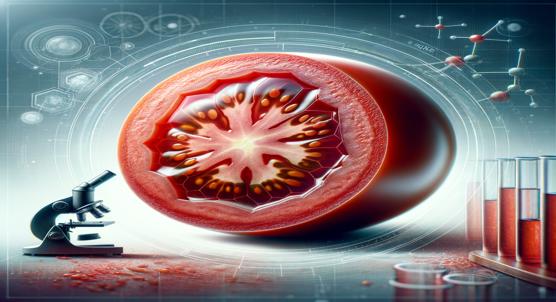
 29th May, 2024
| Greg Howard
29th May, 2024
| Greg Howard
Key Characteristics and Importance of Tomato Enzymes
The study by the Bose Institute reveals the role of rhomboid proteases in tomatoes, highlighting their importance in growth, development, and stress responses. These findings offer insights into plant stress management and potential ways to enhance crop resilience.

 27th May, 2024
| Jim Crocker
27th May, 2024
| Jim Crocker
How Genes and Enzymes Control Melanin Production in Black Radish
A study by the Hubei Academy of Agricultural Sciences has unraveled the molecular basis of melanin in black radish. Identifying p-coumaric acid as a precursor and key genes, the research paves the way for new agricultural and biotechnological applications.
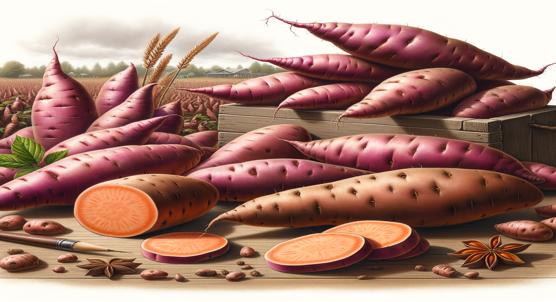
 24th May, 2024
| Greg Howard
24th May, 2024
| Greg Howard
Stability and Performance of Sweet Potato Yield in Different Varieties
BARI's research in Bangladesh identified high-yielding sweet potato varieties, with BARI Mistialu-12 and BARI Mistialu-16 leading in yield and stability. These findings are key for boosting production and income for farmers across diverse regions.

 23rd May, 2024
| Greg Howard
23rd May, 2024
| Greg Howard
Understanding a Gene Linked to Male Sterility in Flowering Chinese Cabbage
A recent study identified a male-sterile gene in Brassica rapa, offering new insights for breeding flowering Chinese cabbage. Structural variations on chromosome A07 and differences in gene expression were key findings, advancing our understanding of plant fertility mechanisms.
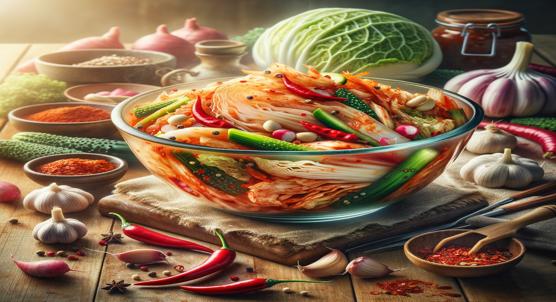
 22nd May, 2024
| Jenn Hoskins
22nd May, 2024
| Jenn Hoskins
Kimchi Consumption Linked to Healthier Cholesterol Levels in Large Study
Regular consumption of Baechu kimchi may improve lipid profiles and reduce cardiovascular risks, especially in women, according to a study by Chung-Ang University. This highlights the potential of dietary choices like kimchi in managing dyslipidemia and promoting heart health.
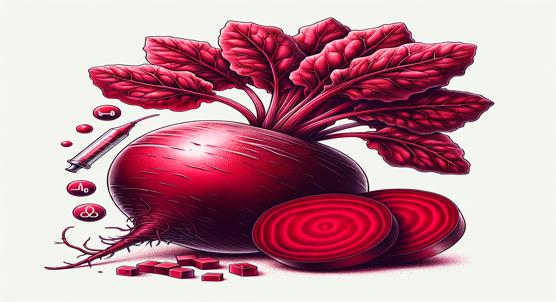
 19th May, 2024
| Jim Crocker
19th May, 2024
| Jim Crocker
How Red Beetroot Products Affect Blood Sugar Levels: A Review of Human Studies
Red beetroot shows promise in managing blood sugar levels due to its high fiber, antioxidants, and nitrates. However, mixed study results highlight the need for more standardized research. Including beetroot in a balanced diet may benefit those with type 2 diabetes and obesity.
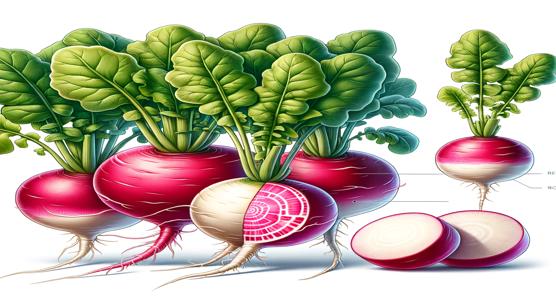
 17th May, 2024
| Jenn Hoskins
17th May, 2024
| Jenn Hoskins
Genetic and Epigenetic Factors Influence Radish Root Skin and Flesh Colors
A study by the Beijing Academy of Agriculture and Forestry Science reveals key genetic factors behind the diverse colors of radish taproots. Identifying RsMYB transcription factors, the research offers insights for breeding radishes with enhanced nutritional and aesthetic traits.
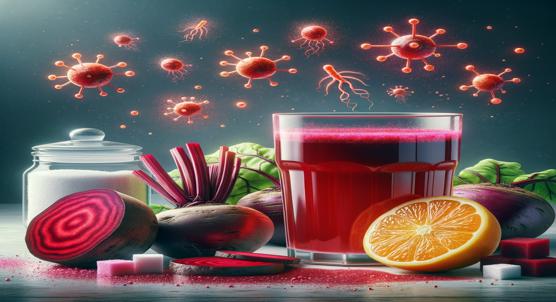
 14th May, 2024
| Jim Crocker
14th May, 2024
| Jim Crocker
Making Red Beetroot Juice: How Microbes, Sugar, and Acid Behave
Exploring red beetroot juice fermentation, researchers find using a probiotic starter culture enhances beneficial acids and ensures consistent quality over traditional methods.
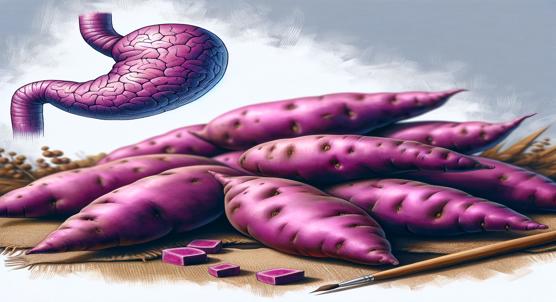
 13th May, 2024
| Greg Howard
13th May, 2024
| Greg Howard
Purple Sweet Potato Compounds Protect Against Stomach Ulcers
Purple sweet potato extract shows promise in treating stomach ulcers by reducing acidity, inflammation, and enhancing immune response in mice studies.

 10th May, 2024
| Greg Howard
10th May, 2024
| Greg Howard
Mutation Leads to Less Wax on Chinese Cabbage Leaves
Scientists link the glossy look of Chinese cabbage to a gene mutation affecting its natural protective wax, offering insights for more attractive and resilient crops.
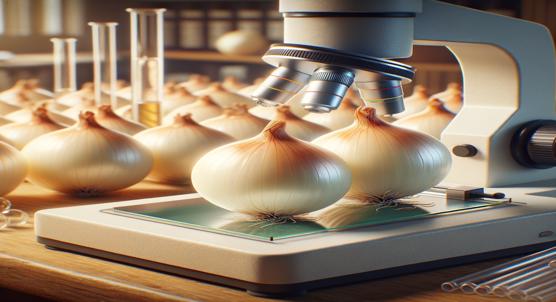
 7th May, 2024
| Jenn Hoskins
7th May, 2024
| Jenn Hoskins
Discovering the Gene Behind White Onions' Color
Scientists at Chonnam National University have uncovered the genetic secret behind white onions, revealing a mutation that disrupts pigment production.

 7th May, 2024
| Jim Crocker
7th May, 2024
| Jim Crocker
How Ingredient Ratios Affect Sweet Potato-Oat Dough and Steamed Cake Quality
Henan University researchers create a healthier steamed cake by blending sweet potato and oat flour, enhancing taste and nutrition.

 3rd May, 2024
| Jenn Hoskins
3rd May, 2024
| Jenn Hoskins
How Tomato Domestication Reduced Helpful Soil Microbe Partnerships
Scientists find that wild tomatoes use soil bacteria to access hard-to-reach phosphorus, a method less prevalent in domesticated strains, hinting at sustainable farming practices.
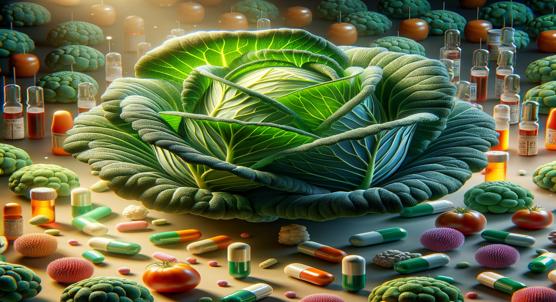
 21st April, 2024
| Jenn Hoskins
21st April, 2024
| Jenn Hoskins
How Cabbage Family Plants Stop Harmful Bacteria Enzymes
Cabbage and kale could be our new allies in the fight against drug-resistant infections, with compounds in these veggies showing promise in inhibiting harmful bacteria.

 20th April, 2024
| Jim Crocker
20th April, 2024
| Jim Crocker
Butternut Squash Seed Paste Boosts Iron and Zinc in Kids
A study shows butternut squash seed paste boosts iron and zinc in preschoolers, improving growth and offering a sustainable solution to nutrient deficiencies.

 19th April, 2024
| Jim Crocker
19th April, 2024
| Jim Crocker
Spinach DNA Unlocks Secrets of Its Journey and Key Crop Features
Scientists have unlocked the genetic secrets of spinach, tracing its global journey and identifying genes linked to key farming traits, paving the way for improved crop varieties.

 18th April, 2024
| Jim Crocker
18th April, 2024
| Jim Crocker
Safe Greens: Solving Parasite Problems
Leafy vegetables sold in Tehran have a 19.4% contamination rate with parasites like Trichostrongylus, leaving spinach most at risk and prompting food safety action.
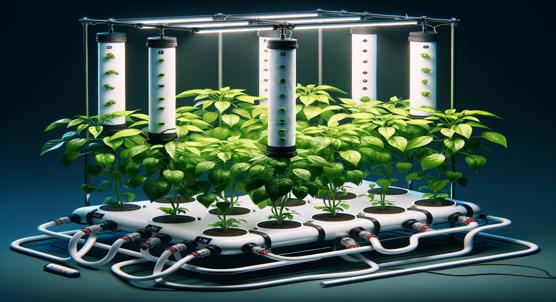
 15th April, 2024
| Jim Crocker
15th April, 2024
| Jim Crocker
How Pepper Plants React to Different Nutrients in Hydroponics
Researchers at Arak University found that bell pepper plants' health under low oxygen varies with different nitrogen sources, aiding in flood resilience.
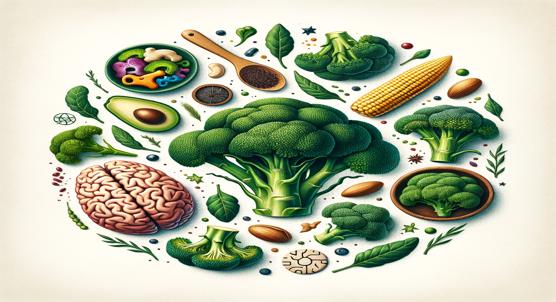
 13th April, 2024
| Jenn Hoskins
13th April, 2024
| Jenn Hoskins
Broccoli Varieties' Chemical Differences and Brain Health Benefits
Researchers at Cairo University found that purple broccoli contains compounds that may help improve communication between brain cells, offering potential dietary support in Alzheimer's treatment.
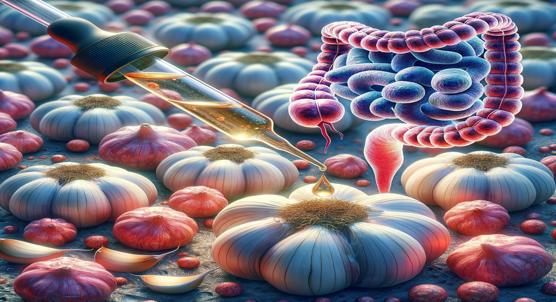
 12th April, 2024
| Greg Howard
12th April, 2024
| Greg Howard
Exploring Garlic Extracts and Cancer Drug Impact on Colon Cancer Cells
Turkish researchers find that black garlic, especially when combined with chemotherapy, may enhance cancer treatment by increasing cell death and reducing inflammation.
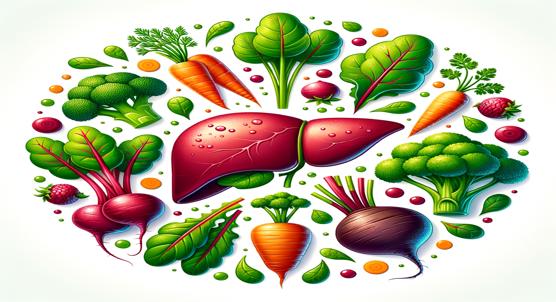
 11th April, 2024
| Jim Crocker
11th April, 2024
| Jim Crocker
Comparing Natural Compounds in Veggies for Liver Health
Discover the power of cruciferous veggies like broccoli and radish sprouts! Rich in cancer-fighting compounds, they're especially potent in young sprouts, offering liver protection and detox benefits.
